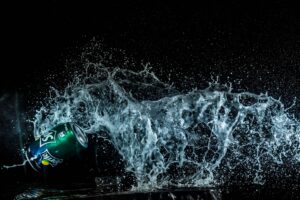
Hey there, parents and teachers! If you’re tired of tripping over untied shoelaces or hearing the age-old plea, “Can you tie my shoes, please?” then you’re in the right place! Teaching kids to tie their shoes can be a tricky task, but fear not! Occupational therapists (OTs) are here to save the day with some invaluable tips and techniques to make the process a breeze.
First things first, let’s talk about readiness skills. Before diving into the intricacies of shoe-tying, it’s essential to ensure that your child is developmentally ready. Here are a few signs to look out for:
- Fine Motor Skills: Can your child manipulate small objects with their fingers? Tying shoelaces requires nimble fingers and hand-eye coordination.
- Attention Span: Is your child able to focus on a task for a reasonable amount of time? Tying shoelaces demands patience and concentration.
- Coordination: Can your child follow multi-step instructions and coordinate both hands simultaneously? Shoe-tying involves a series of steps that need to be performed in a specific order.
- Motivation: Do they really want to learn? For my daughter it was knowing we would buy the sparkly pair of sneakers she really wanted when she was in 4th grade.
Once you’ve assessed your child’s readiness, it’s time to jump into action! Here are some tried-and-true techniques recommended by occupational therapists:
- The Bunny Ears Method: This classic technique is a favorite among OTs and kids alike. Here’s how it works:
- Start with a simple explanation: Cross the laces to form an “X,” then make two bunny ears.
- Wrap one bunny ear around the other and pull through to make a knot.
- Tighten the knot by pulling the bunny ears gently.
- More Traditional Method: Check out the video below for specific language and use a trick to keep the laces tight. After making the X loop the laces under 2 times.
- Practice, Practice, Practice!: Like any skill, practice makes perfect. Encourage your child to practice tying their shoes regularly, but keep it fun and lighthearted. You can use shoes with larger laces or even create a shoe-tying board with oversized laces for practice sessions.
- Use the same language every time: I use “cross, under, under, pull tight, make a loop-leave a tail, wrap-around, poke through, switch then pull tight.
- Visual Aids and Songs: Utilize visual aids such as diagrams or videos to help your child understand the steps involved in tying shoelaces. You can also make up a catchy song or rhyme to accompany the process, making it more engaging and memorable.
- Chunking the Steps: Breaking down the task of shoe-tying into smaller, manageable steps can make it less overwhelming for your child. Focus on mastering one step at a time before moving on to the next.
- Celebrate Progress: Celebrate each milestone and progress your child makes in learning to tie their shoes. Positive reinforcement goes a long way in boosting their confidence and motivation. Give certificates or buy that sparkly pair of shoes.
Shoe Tying Club
We started an exciting initiative that has been making waves at our school – the Shoe Tying Club! This club has proven to be both engaging and impactful for our students. We’ve enlisted the support of older students, faculty, and staff who graciously volunteer their time to mentor students in the art of shoe tying. Recognizing the importance of celebrating achievements, we proudly award certificates to participants who successfully master the skill. To accommodate busy schedules, we’ve allocated just 15 minutes each day for any student to drop in and learn. Additionally, teachers play a pivotal role by encouraging students to participate, particularly those in the 3rd to 5th grade range where we’ve seen significant enthusiasm and progress. As we witness the positive outcomes and sense of camaraderie fostered by the Shoe Tying Club, I encourage you to consider starting a similar initiative at your schools. Together, we can empower our students and strengthen our school communities one lace at a time.
Remember, every child learns at their own pace, so be patient and encouraging throughout the journey. And don’t forget to celebrate those victorious moments when your little one finally masters the art of tying their shoes independently!
With these tips and techniques from occupational therapists, you’re well-equipped to tackle the shoelace tying challenge with confidence. So, grab those sneakers, lace ’em up, and let the shoe-tying adventures begin! Happy tying!
About the Author
I am a Certified Occupational Therapy Assistant (COTA) and have been working in a public school system for more than 25 years. My resources can be found on TPT, BOOM Learning, Made by Teachers, Classful, and Your Therapy Source. I appreciate your interest wherever you wish to shop.
My mission is to help you find creative ideas to incorporate fine motor, visual perception, gross motor, and social-emotional learning into your lessons.
I hope you consider signing up for my Free Resource Library with your email. I send out emails about once a week and share resources, tips, and planning ideas for your classroom or occupational therapy needs. Hopefully, these help your students work on building their skills in a fun and engaging way.
Thank you for your interest in my resources and ideas. I hope you will consider following my journey on TPT or wherever you wish to shop.






